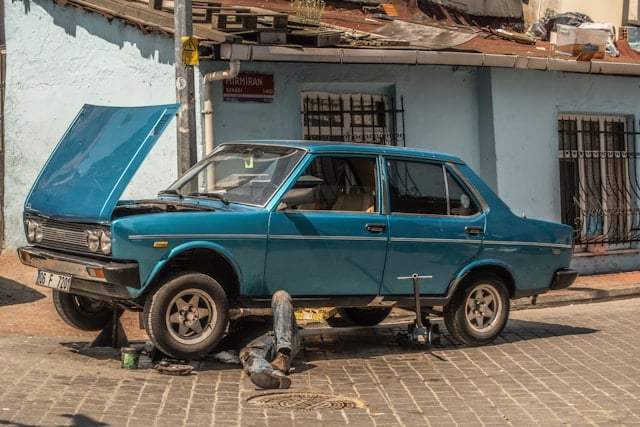What Are the Risks of DIY Auto Body Repairs?
 Taking on auto body repairs yourself might seem like a smart way to save money and gain a sense of accomplishment. However, DIY repairs often come with significant risks that can compromise your safety, damage your vehicle further, and lead to costly consequences. At Chaney’s Collision Centers, we emphasize the value of professional expertise in collision repairs. Here’s an in-depth look at the key risks involved if you consider doing bodywork on your own.
Taking on auto body repairs yourself might seem like a smart way to save money and gain a sense of accomplishment. However, DIY repairs often come with significant risks that can compromise your safety, damage your vehicle further, and lead to costly consequences. At Chaney’s Collision Centers, we emphasize the value of professional expertise in collision repairs. Here’s an in-depth look at the key risks involved if you consider doing bodywork on your own.
Health and Safety Concerns
Physical Injuries
Auto body repair involves tools and materials that can be dangerous when handled improperly. From sharp metal edges and heavy parts to power tools and chemicals, the risk of cuts, bruises, burns, and other injuries is high without the right training and equipment.
Exposure to Toxic Substances
Paints, solvents, fillers, and other repair products emit fumes that can be harmful if inhaled. Lack of proper ventilation, protective masks, or gloves increases your risk of respiratory issues, skin irritation, or long-term health problems — dangers often underestimated by DIY enthusiasts.
Potential Damage to Your Vehicle
Voiding Manufacturer’s Warranty
Many vehicle warranties require that repairs and maintenance meet specific quality standards performed by certified technicians. Attempting repairs yourself can void these warranties, leaving you responsible for any future related repairs or defects.
Undetected Hidden Damage
Accidents often cause structural or internal damage that isn’t obvious at first glance. Professionals use diagnostic tools and experience to uncover damage below the surface. Without this, DIY repairs may only address superficial issues, allowing serious problems to worsen.
Compromising Safety Systems
Modern vehicles come equipped with airbags, advanced driver-assistance systems (ADAS), sensors, cameras, and other integrated technologies. Incorrect repairs can disrupt or disable these safety features, which could jeopardize your protection in future incidents.
Quality and Appearance Issues
Poor Paint Matching and Finish
Achieving a flawless, factory-quality paint finish requires professional-grade materials, tools, and skill. Most DIY projects result in mismatched colours, uneven textures, or peeling paint, which can detract from your car’s appearance and reduce its resale value.
Incomplete or Weak Repairs
Skipping crucial preparation steps — such as cleaning, sanding, primer application, and curing time — can undermine the durability of the repair. DIY fixes risk peeling, cracking, corrosion, and other issues that will need expert attention later.
Hidden Costs and Time Investment
Unexpected Expenses
What begins as a minor repair can quickly turn complicated, especially if hidden damage is uncovered or mistakes are made. Fixing botched DIY repairs frequently costs more than professional work upfront.
Time Consuming and Frustrating
Auto body repair is labour-intensive and requires patience and precision. Without experience, you might spend significantly more time and effort than anticipated, often with less satisfying results.
When to Leave It to the Pros
For minor cosmetic tasks like small scratches or washing away scuffs, DIY repair might be adequate. For any accident-related damage or repairs involving the vehicle’s structure, paint, or complex electronics, trusting certified collision repair centers like Chaney’s is essential.
Experienced technicians have access to diagnostic tools, industry-grade materials, and stay updated with manufacturer guidelines. They also provide warranties on work, ensuring your vehicle is restored safely and efficiently.
Conclusion
While DIY auto body repairs may seem appealing, the risks—ranging from personal injury and health hazards to compromised vehicle safety and poor-quality finishes—make professional intervention the safer choice. At Chaney’s Collision Centers, we provide expert care that protects your investment and keeps you safe on the road. When it comes to collision repairs, trust the pros to deliver lasting, reliable results.

